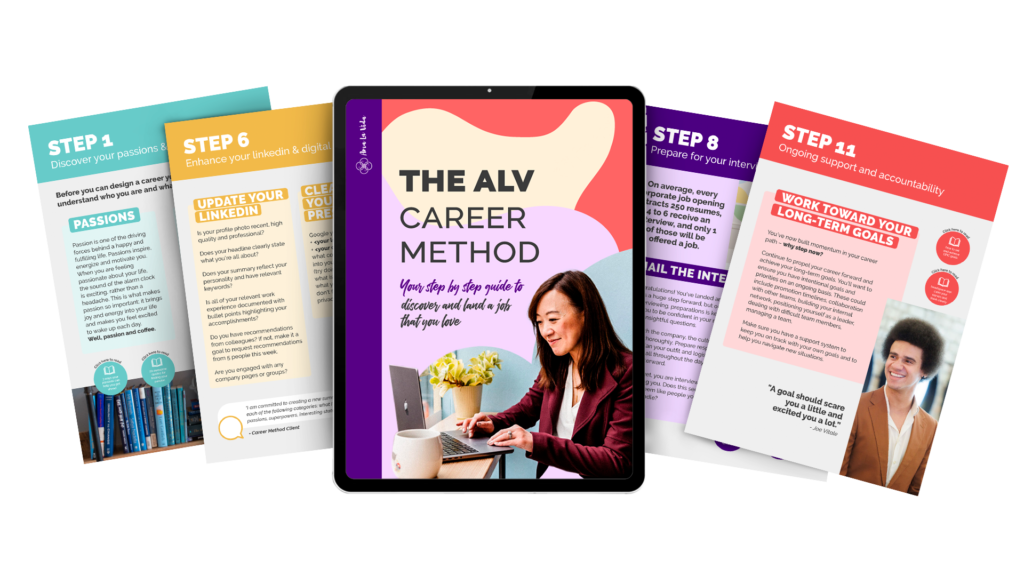Get Your Resume the Attention it Deserves in 5 Steps

Why is resume writing so hard? What seems like a fairly straightforward part of the job search process can sometimes be the most difficult. Have you ever found yourself with a major case of writer’s block when it comes to creating or updating your resume? And why is it so much easier to help someone else with their resume, but when it comes to writing your own you don’t know where to even start? And how is it possible to spend hours and hours perfecting your resume when a hiring manager may only glance at it for 30 seconds (maybe less)? The resume writing process can make you want to pull your hair out. There has to be a better way! There is a better way. I am going to provide you with five steps to make the resume writing process, easier, relatively pain-free, and most importantly, effective. Stick with me. I am going to help you polish your resume and get it the attention it deserves.
Tailor it.
- If you were to take only one thing away from this post (this is only hypothetical, I know you’re an overachiever and will read this post from start to finish) this is it. Are you paying attention? Tailor. Your. Resume. What does this mean? It means don’t even think about sending out a zillion generic resumes because you want to apply to as many positions as you possibly can. This is a huge waste of your precious time. What is your target? What type of position, industry, or company are you applying to? Who will your audience be? Who will be reading your resume? Do you like spending time reading things that don’t interest or pertain to you? I didn’t think so. Neither do hiring managers. They read hundreds and hundreds of resumes. Like everyone else, hiring managers figure out how to gather the information they need from your resume in a very short amount of time.
- A productive job search will yield many, many different versions of your resume. Some versions will only vary slightly from the other, especially if you are applying for similar types of positions in the same industry, but having just one, generic resume will not do it. Remember, it’s about the quality of your resume, not the quantity sent out that counts. Create a targeted, polished resume that keeps the hiring manager interested.
- Pro tip! Generate and maintain a master resume. The master resume is used for your own personal reference. The master will help you keep a running list of your experiences, skills, and accomplishments. When you are ready to apply for your dream position, you can pick and choose which pieces from your master resume that you will include on your tailored version.
Formatting is key.
- Have you ever opened up a website on your browser and it is a just a hot mess? What did you do? I bet in .5 seconds you closed that page down and moved on to the next. Well, you guessed it, the same goes for your resume. If your resume is messy and hard to read, the hiring manager will move on to the next resume in the stack. Formatting your resume, however, can be a nightmare. You’re fighting with tables, indentations, spacing between lines, etc. You may even give up and use a template. But here’s the thing: simple is better. The fancier you try to make your resume, the messier it can look. Remember, that a hiring manager is going to take roughly 30 seconds (some studies report much less than 30 seconds) to skim through your resume. A simple, clean, and organized document will make for easy reading. If your resume is too cluttered, the font is too big or too small, or the format is not consistent, you are going to lose that reader, and fast.
- Pro tip! Use bold fonts for your heading and section titles. Italics, underlining, and symbols can also help create a clean format (take a look at this template as a general guide) As a rule of thumb, use standard font types, avoid boxes and tables, and do not use colored fonts other than black. You may choose to also adapt a more stylized version of your resume (that includes color or a more creative format) to be used at networking events or when emailing a recruiter directly. However, just be sure that you are using a simplified version of your resume when submitting an online application (learn more about Applicant Tracking Systems here). When you take a look at your finished resume product, do you have a good balance on your document? Meaning, is there unused white space, have you scrunched everything onto the left hand side? If so, re-format so that you have a good use of space. I also highly recommend bullet points within your experience sections. Make it easy for the reader gather the information they need quickly.
Sections draw attention.
- Here’s the thing. Your section titles are going to make or break your resume. How do you get the hiring manager interested in actually reading your resume? You make the section titles interesting and pertinent to the position in which you are applying. And you must arrange the sections in an order that makes sense. What are the most relevant pieces of your resume? Is it your experience or skills section? If so, are those towards the top of your resume or hiding at the bottom? Remember when we talked about templates in #2? Not all templates are going to be set up for your particular resume needs. Don’t be afraid to manipulate the section order and naming of section titles to catch the reader’s eye.
- Pro tip! Consider two experience sections on your resume. One section might be “Relevant Experience” or “Technical Experience” or “Financial Experience” and another might be “Other Experience” or “Additional Experience”. It is far better to have multiple experience sections than to have one long (by long, I mean you will have lost your reader before they get to the good stuff) section. This will also allow you to place your relevant experience section up towards the top of your resume. Remember, we are trying to reel them in early!
Be results-oriented.
- Assisted. Assisted. Assisted. This might be the most popular word on a resume of all time. Welp, I am sorry to tell you this, but “assisted” is boring. There, I said it. It feels good to get that off my chest. But seriously, within your experience section(s), how do you prove that you actually contributed to that company or organization? Why is this important? Because the hiring manager wants to know what you will contribute to their organization too. Now, this is where folks sell themselves short. I am sure you did more than just assist. Get creative with action verbs (pssst, google action verbs for some hints or start here) so that your experience section is powerful, shows your contributions, and highlights your skills.
- Pro tip! Use this the S.T.A.R. formula as a guide:
- Situation or Task- What was the context? What was your task or duty?
- Action- How did you complete that task or duty?
- Result- What was the result and how did this contribute to the organization or team? Include quantity (how much, how many, how often), when possible, to drive impact.
- Example: Improved UX measures by 25%, two times more than average for team*, through larger user feedback collection methods and synthesis of solutions, yielding increase in customer satisfaction
- *Remember! While including quantity on your resume is certainly impactful, it is crucial to provide context to those numbers. Help the reader understand what “25%” means. By including “two times more than average for team”, the reader now understands that you have exceeded fellow teammates by two-fold. Now this is really saying something!
Get to the point.
- I am going to keep #5 just that, to the point. Hopefully, by now, you are starting to get the sense that being direct, concise, and targeted is the name of the resume game. Generally speaking, a one page resume is all you need to grab that hiring manager’s attention. If you can, without a doubt (meaning, you have been in the industry in which you are applying for several years), fill two or more pages with direct, relevant experience, then by all means go for it. Otherwise, keep it short and sweet.
- Pro Tip! If you are having a hard time keeping your resume on one page, be sure to look at your formatting. Can you reduce the size of your margins? Have you utilized the white space well? Maybe you have too many bullet points within your experience section(s)? Or perhaps your bullet points are too long? Get creative with how you can best use the space on your resume.
And there you have it. These are five steps that will get your resume the attention it deserves. You’ve worked hard on your resume, make sure that it stands out so you can get to the next step in the hiring process. Good luck and happy resume writing!
Still feeling a little stuck? Don’t worry! As a Career Specialist, I specialize in resume writing and would love to support you. Take a look at our resume packages here. If you are unsure of which package might work for you, schedule a consult here.












